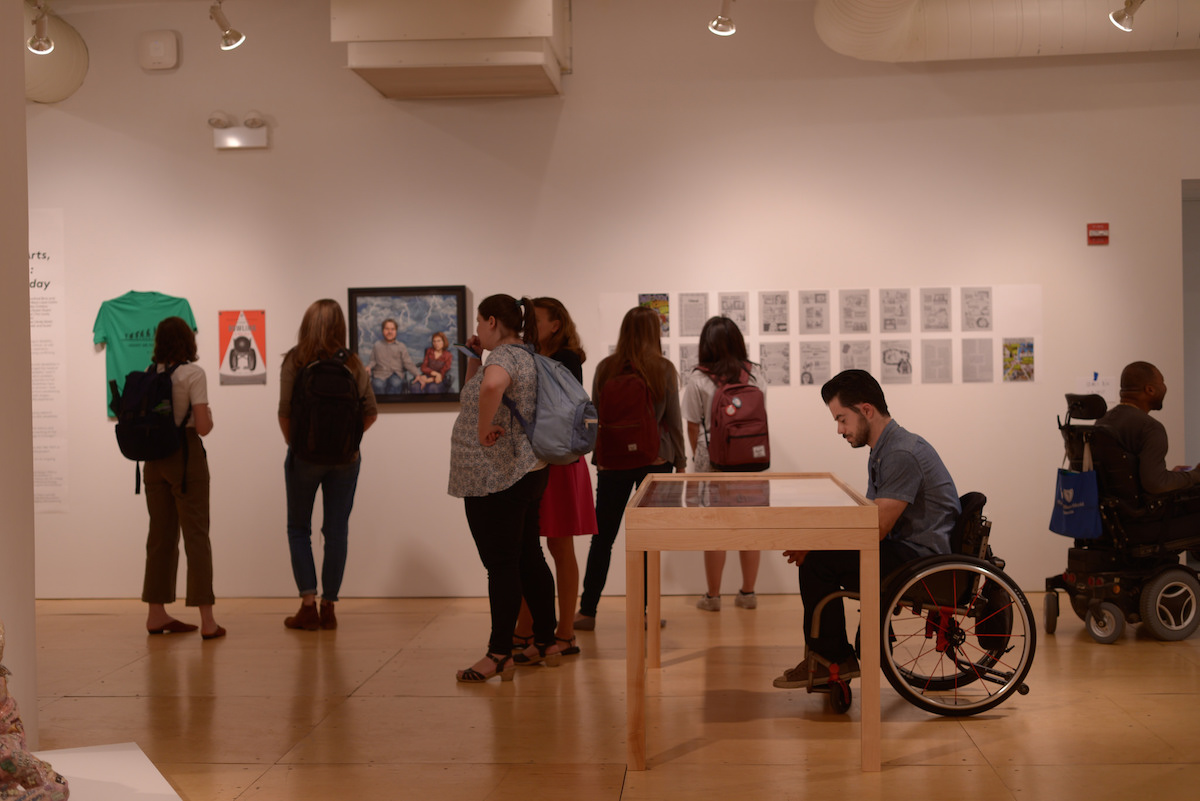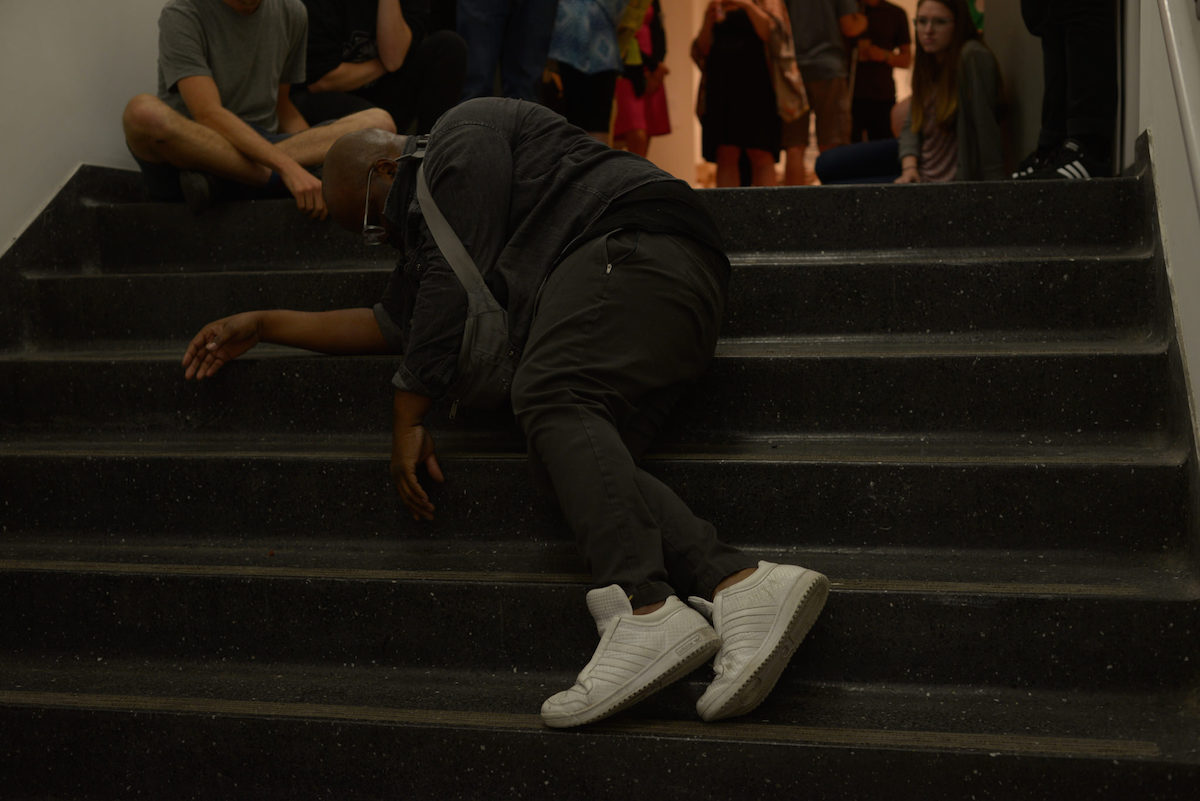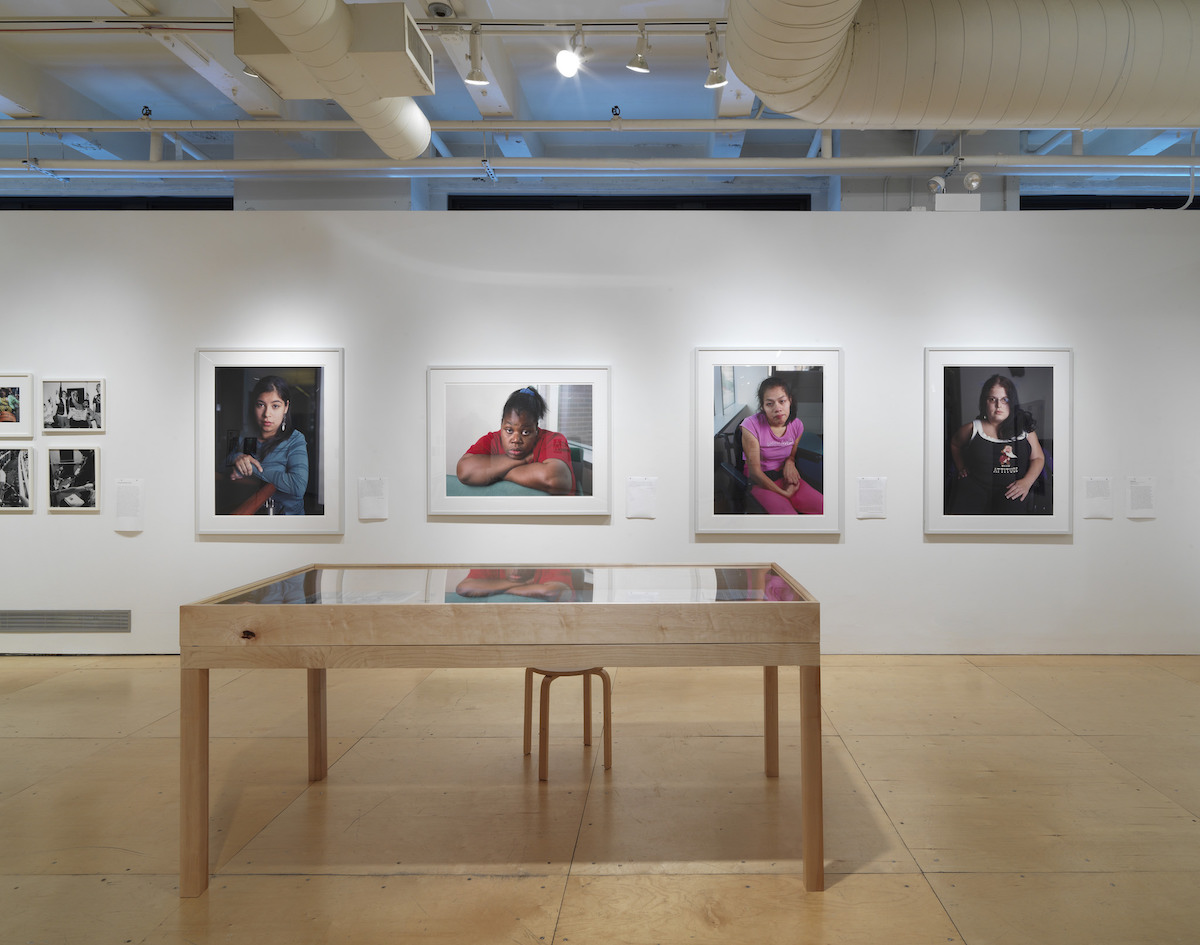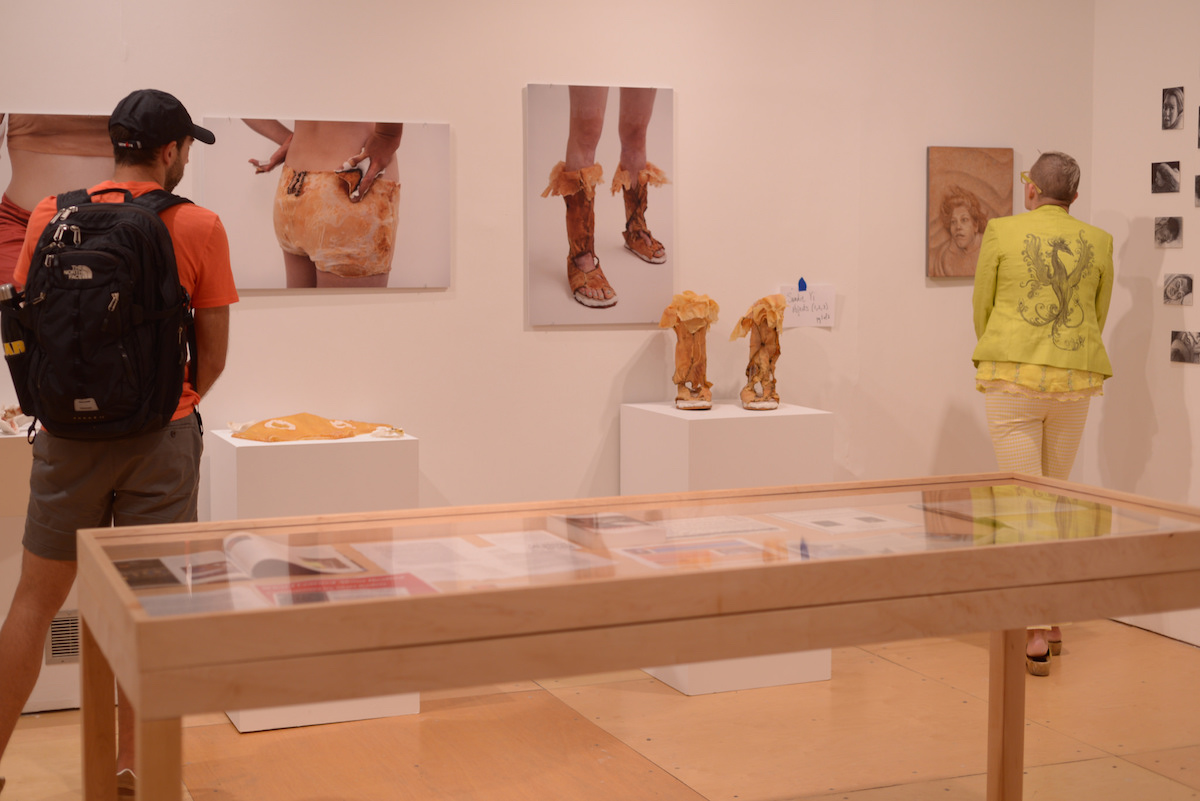In 1978, the Illinois Capital Development Board published a guide to setting design standards so public buildings and spaces would be barrier-free for disabled persons. Accessibility Standards, Illustrated outlined requirements such as accessible entrances, curb ramps, minimal hallway widths, and other architectural codes that are ubiquitous today. Put into effect 12 years before the passage of the Americans with Disabilities Act in 1990, the guide was an early testament to the disability rights movement stirring in Illinois.
A major driving force behind its publication was the Chicago architect Jack Catlin, who worked closely with government figures to develop these accessibility standards. Catlin, who uses a wheelchair, is currently a partner at LCM Architects, and he exemplifies the role artists have played in pushing for disability rights and access in Chicago over the last four decades.
This history has largely been overlooked. Seeking to remedy that is Chicago Disability Activism, Arts, and Design: 1970s to Today, an exhibition at University of Illinois at Chicago’s Gallery 400 that spotlights key figures in the disability arts movement. The material spans from records of Catlin’s early advocacy, including Accessibility Standards, Illustrated, to works by local contemporary artists like Dawoud Bey and Sky Cubacub who embrace an intersectional understanding of disability. The show also spotlights a wide variety of media, from abstract sculptures by Terrence Karpowicz, who uses a prosthetic leg, to a sound piece about navigating the CTA by Andy Slater, a blind artist.
“We want to make clear how short the history of disability culture is, because the ‘70s is not so long ago,” says Lorelei Stewart, the gallery’s director. “And that this work is not necessarily as widely recognized as it could be.” She adds that the exhibition represents an ongoing research project, as many narratives remain in the dark. “We feel the work is not complete,” she says. “What we are presenting is what we are able to do at this point. We are asking people to come with contributions for what is missing.”

Many artists in the exhibition were part of Access Living, an organization established in 1980 that promotes independent living for people with disabilities. It was, and still is, a key way in which disabled people found each other. The community that developed would help amplify the local disability rights movement. For practicing artists, particularly those in the ‘80s and ‘90s, this community also supported them as cultural producers when many others wouldn’t — whether that meant getting their work exhibited, sold, or simply appreciated.
“Work about disability has been framed as therapy and outsider work,” says Riva Lehrer, whose paintings of other disabled artists are part of the show. “Whether you’re talking about the galleries, art schools, or museum practices — really anything you name — there’s been a denial, a dismissal, or an active hostility towards work about disability.”
Lehrer was a student at the School of the Art Institute of Chicago in the ‘90s. Born with spina bifida, a condition that limited her mobility, she faced constant challenges as she navigated SAIC. The institution had no resource center then dedicated to supporting individuals with disabilities, so she and her peers had to advocate for their own needs.
“I had to just fight continuously,” says Lehrer, who is now a SAIC faculty member. “I can’t stand up to paint, and all the studios were set up for students who can stand up to paint. Parking was a nightmare. Parking is still a nightmare.”
She found support in a small group of students, and they worked together to improve disability services at SAIC and challenge stereotypes of people with disabilities. Among them were Jude Conlon Martin, a sculptor who had a spinal cord disability, and dancer Bill Shannon, who has Legg-Calve Perthes, a hip disorder. They organized student shows about impairment, spoke to curators about work that dealt with impairment, and simply talked to other students to make themselves visible in their community’s eyes. Today, SAIC has a Disability and Learning Resource Center, which works with students with disabilities to ensure that they have equal access to the institution's facilities and programs.
"I made a lot of noise while I was there," Lehrer says. "I think people who came in after me had an easier time because I had been so vocal."

The SAIC students were part of a growing citywide network of disability rights activists that included not only Access Living but also ADAPT, a grassroots group that sought to make urban transportation accessible. (The acronym initially stood for “Americans Disabled for Accessible Public Transit”; today, it is short for “Americans Disabled for Attendant Programs Today.”)
In 1992, ADAPT held protests in Chicago to fight budget cuts to disability services and demand housing that would allow for independent living. They occupied roads, swarmed offices of the Department of Health and Human Services, and shut down the Thompson Center.
“To them, the ADA was not being implemented quickly enough, and there were limitations in the way it was being implemented at the federal, state, and independent medical dimensions,” Stewart says.
Instrumental in bringing ADAPT to Chicago were Mike Ervin and his partner Anna Stonum, whom Lehrer painted as part of Circle Stories, a series that commemorates disabled artists and academics entrenched in the disability rights movement. Stonum, who passed away in 1999 from complications associated with Friedreich’s Ataxia, designed, among many other things, the logo “Adapt or Perish,” a tongue-in-cheek play on the evolution of man from monkey. Ervin, who has muscular dystrophy, is one of the protagonists in a documentary by Kerry Richardson, The Kids Are Alright, which confronts the dehumanizing representation of disabled people in the media — for Ervin, specifically, in the Jerry Lewis Telethon.
Richardson’s video is a prime example of how disabled artists have disrupted prevailing narratives of their community to tell their own stories. Dawoud Bey, for one, who has severe hearing loss, photographed young women who are part of the Empowered Fefes, a support group that meets regularly at Access Living. Each large portrait is accompanied by a statement from the sitter that touches on their personal lives and why they attend this program.

Safe spaces and groups like Access Living have helped the development of a disability aesthetics, which Stewart describes as one that "challenges traditional modes while conflicting categories and definitions.”
Artist Sandie Yi, who was born with two fingers and two toes on each limb, embodies this idea in her series of wearable sculptures, Crip Couture, which don't just perfectly fit her hands and feet but also beautify them with careful embroidery. Then there's Sky Cubacub, who makes flashy, gender non-conforming garments intended to draw attention to their wearers. The works are a clear departure from wearables such as prosthetics that are designed to blend in with the rest of the body, in effect perpetuating the idea of a “normal” body.
The labor of artists and activists has led to a society that’s generally more accessible today, and one in which disabled individuals are more visible. Still, ableism persists. In Chicago, despite artists’ role in demanding rights for the local disability community, many still face discrimination within the local art scene.
"It's been very hard. I can’t think of a major museum here in Chicago that’s ever done anything I was involved with, that’s done a show about impairments or disability that wasn’t framed as educational,” says Lehrer. “It’s either been about therapy or education, and that’s almost not even happened.” She adds that almost every gallery in the city remains inaccessible.
And so nonprofits like Access Living have stood as some of these artists’ greatest allies. The organization Arts of Life, established in 2000, serves as an incubator for disabled artists, providing them with studio space and a community gallery to exhibit their work. And Bodies of Work, headquartered at UIC, leads programs that give disabled artists a platform to share and celebrate their work. Since 2014, the group has partnered with 3Arts, a nonprofit that provides marginalized artists — including women, people of color, and disabled artists — with grants.

Gallery 400’s exhibition on disability arts and activism is, Lehrer says, “incredibly unusual.” It doesn't just underscore the labor of Chicago’s creative community in advancing the disability rights movement. It gathers and celebrates a diverse, honest body of work by artists with disabilities.
“Disability has been seen as the antithesis of what is beautiful and of what is hip,” Lehrer says. “The idea of what it means be disabled is still stuck in this reductive and sad place, in a lot of ways.
“It’s so important for the complexity to get out there — the beauty, the creativity, and the weirdness.”
Chicago Disability Activism, Arts, and Design: 1970s to Today runs through October 20 at Gallery 400.


